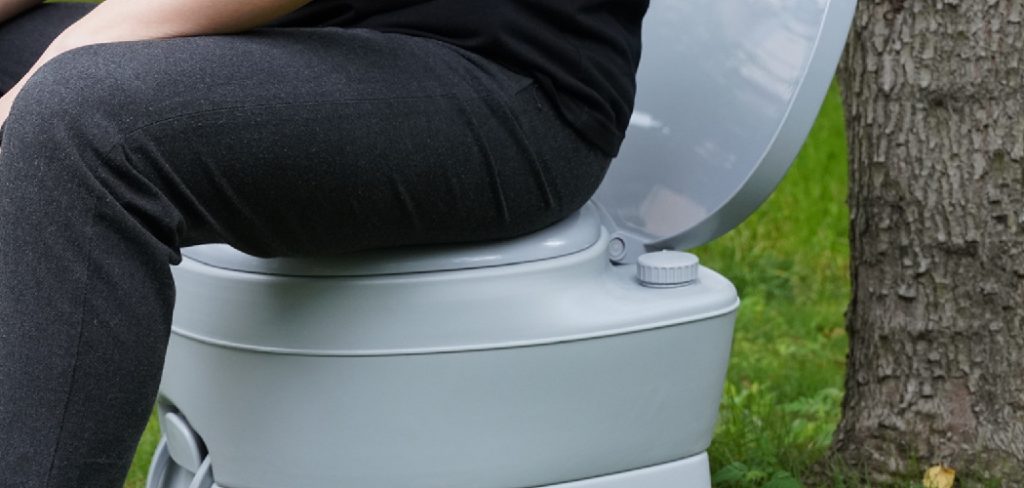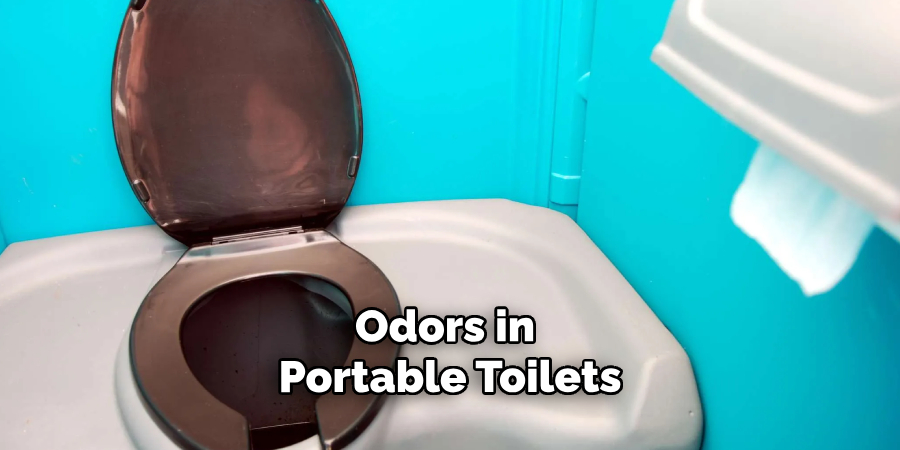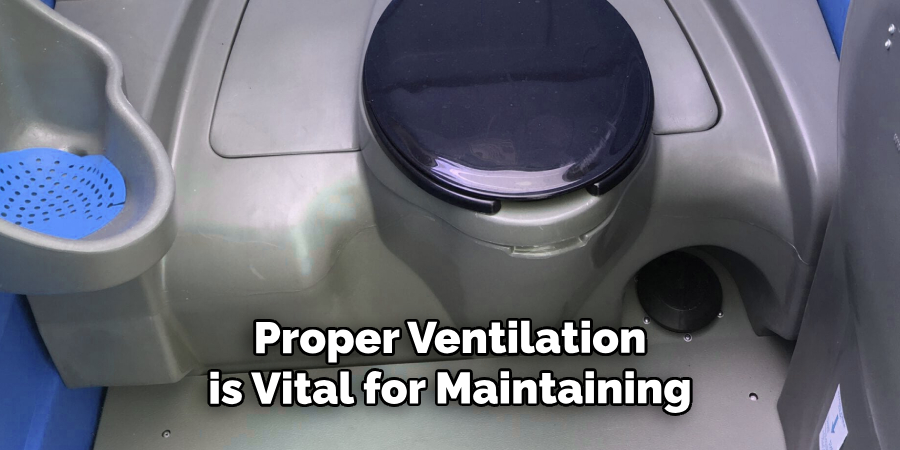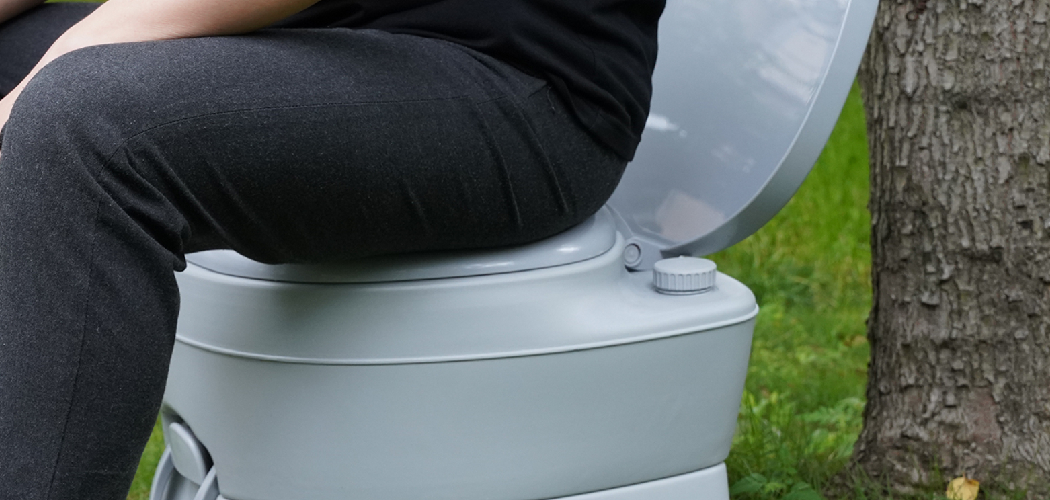Are you tired of using a portable toilet that has a lingering unpleasant smell? It can be frustrating and embarrassing, especially when using it in public. Fortunately, there are several simple steps you can take on how to eliminate odors in a portable toilet.

Keeping a portable toilet odor-free ensures a comfortable and hygienic experience. Odors in portable toilets can quickly become unpleasant due to the enclosed space and the accumulation of waste. However, with the proper techniques and products, it is possible to effectively control and eliminate these odors. Whether you’re managing portable toilets for an event, a construction site, or a camping trip, understanding how to tackle unpleasant smells can help maintain a fresh and inviting atmosphere for users.
This guide will explore practical solutions and tips to keep portable toilets smelling clean and fresh.
What Are the Causes of Odors in Portable Toilets?
Before we dive into the solutions, we must understand what causes odors in portable toilets. This knowledge will help you target the root of the problem and effectively eliminate it.
- Waste Accumulation: Portable toilets are designed to hold human waste; as more people use it, the waste accumulates. The longer the waste remains in the bathroom, the stronger the odor will become.
- Bacteria and Germs: Bacteria thrive in warm, moist environments like portable toilets. These microorganisms break down waste and produce foul-smelling gases such as ammonia and hydrogen sulfide.
- Lack of Ventilation: Poor ventilation can cause odors to linger inside a portable toilet instead of escaping outside. This is especially true for fully enclosed units or confined spaces with limited airflow.
- Inadequate Cleaning: Regular cleaning is crucial to keeping a portable toilet smelling fresh. Neglecting to clean the toilet regularly can lead to a build-up of waste and bacteria, resulting in strong odors.
- Environmental Factors: High temperatures, humidity, and direct sunlight can increase odors in portable toilets. These conditions create a breeding ground for bacteria and accelerate the breakdown of waste.

These are the main factors that contribute to odors in portable toilets. By addressing each of these issues, you can effectively eliminate unpleasant smells and maintain a clean and inviting environment.
What Will You Need?
To effectively eliminate odors in a portable toilet, you will need the following:
- Portable Toilet Cleaner: Look for a cleaner specifically designed for portable toilets. These cleaners are usually biodegradable and safe for use in septic systems.
- Disinfectant or Sanitizer: Choose an effective disinfectant or sanitizer against bacteria and viruses. This will not only help with odor control but also promote proper hygiene.
- Deodorizing Products: There are several deodorizing products available on the market, such as air fresheners, urinal screens, and tank treatments. These products can help mask unpleasant smells and keep the toilet smelling fresh.
- Cleaning Supplies: You will need basic cleaning supplies such as gloves, brushes, and sponges to clean the toilet thoroughly.
Once you have all the necessary tools and products, follow these steps to eliminate odors in a portable toilet.
9 Easy Steps on How to Eliminate Odors in a Portable Toilet
Step 1. Empty the Waste Tank:
Start by emptying the waste tank into a designated disposal area or facility legally approved for such waste. This is a crucial step, ensuring the tank is ready for thorough cleaning and deodorizing.

Use caution during this process to avoid spills and ensure proper sanitation. Wearing gloves and other protective gear is highly recommended to protect yourself from direct contact with the waste. Once the tank is emptied, rinse it with clean water to remove any remaining residues and prepare it for the next steps. Proper disposal and initial cleaning will set the foundation for effective odor elimination.
Step 2. Rinse the Tank with a Cleaning Solution:
After the initial rinse with clean water, fill the tank with water and a specialized cleaning solution designed for portable toilets. Swirl the solution around to coat all interior surfaces, ensuring that stubborn residues are loosened. Allow the cleaning solution to sit for a few minutes to break down any lingering waste or buildup. This step is essential for deep cleaning and sets the stage for effective odor removal in the later steps. Afterward, empty the tank and rinse it thoroughly with clean water to remove all traces of the cleaning solution.
Step 3. Apply an Odor Neutralizer:
Once the tank has been thoroughly cleaned and rinsed, it’s time to apply an odor-neutralizer. Choose a high-quality neutralizing agent formulated explicitly for portable toilet tanks. Add the recommended amount of the neutralizer to the tank, then fill it partially with clean water to activate the solution. Swirl the tank gently to ensure even distribution of the product. This step is crucial in preventing unpleasant odors from developing and maintaining a fresh environment for future use.
Step 4. Reassemble and Test the Tank:
After ensuring the tank is clean and odor-free, reassemble all the components. Carefully attach the tank back to the portable toilet unit, ensuring all connections are secure and properly aligned.

Once reassembled, test the tank by flushing the system to confirm everything functions as it should. This step helps verify no leaks or lingering issues, ensuring the portable toilet is ready for use.
Step 5. Troubleshooting Common Issues:
Even with proper maintenance, occasional issues can arise with portable toilets. One common problem is unpleasant odors, which may occur if the deodorizing agents are insufficient or the tank has not been emptied frequently enough. To resolve this, thoroughly clean the tank and add a fresh dose of deodorizer. Another issue might be leaks, which can often be traced to damaged seals or improperly tightened connections. Inspect the seals, replace them if necessary, and ensure all components are securely tightened. Regularly checking for and addressing these issues will help keep the portable toilet functioning effectively.
Step 6. Preparing for Long-Term Storage:
If you need to store a portable toilet for an extended period, additional steps may be necessary to prevent damage and ensure longevity. Begin by cleaning the unit thoroughly removing any residual waste or cleaning chemicals. Allow all components to dry completely to avoid moisture buildup, which could lead to mold or corrosion.
Disassemble removable parts, such as the waste tank and seat, to reduce wear and tear during storage. Store the unit in a cool, dry, and shaded location to protect it from temperature extremes and UV damage. Cover the portable toilet with a protective tarp or case from dust and debris. By taking these precautions, you can significantly extend the unit’s life and simplify its preparation when it’s needed again.
Step 7. Regular Maintenance Checks:
Regular maintenance checks are essential for ensuring the portable toilet remains in optimal condition. Inspect the unit periodically for signs of wear and tear, such as cracks, leaks, or loose components. Check seals and gaskets for damage to prevent potential leaks and replace them as needed. Examine the holding tank to ensure no blockages or damage could affect its operation. Additionally, monitor the ventilation system to guarantee proper airflow and odor control. Consistent maintenance not only helps the portable toilet function efficiently but also extends its lifespan and reliability over time.
Step 8. Ensure Proper Ventilation:
Proper ventilation is vital for maintaining a portable toilet’s overall hygiene and user comfort. A well-functioning ventilation system prevents the buildup of unpleasant odors by enabling a continuous airflow that carries harmful gases away. Regularly inspect ventilation pipes and components for blockages, cracks, or wear that could inhibit their effectiveness.

If the vents are obstructed or damaged, it can lead to poor air circulation, resulting in an unpleasant user experience and potential health concerns. Additionally, consider using high-quality ventilation caps or covers to ensure outdoor elements, such as rain or debris, do not enter the system. Periodically cleaning the ventilation pipes helps to maintain optimal airflow, providing a cleaner and fresher environment. By paying attention to ventilation, you not only uphold sanitation standards but also enhance the usability of the portable toilet.
Step 9. Promote Good Hygiene Practices:
Encouraging good hygiene practices among users can also help reduce odors in a portable toilet. Provide hand sanitizers or antibacterial wipes near the unit so users can clean their hands before and after use. Additionally, placing signs reminding users to flush correctly and dispose of waste in designated areas can also promote better hygiene and prevent potential odor issues. Educating users on proper usage and maintenance of the portable toilet can also help keep it clean and well-maintained.
By following these steps and practicing good hygiene habits, you can effectively clean and maintain a portable toilet, ensuring its functionality and comfort for all users.
Conclusion
How to eliminate odors in a portable toilet requires consistent maintenance and attention to cleanliness. You can significantly minimize unpleasant smells by regularly cleaning the unit, properly ventilating it, and using effective odor-control products.
Encouraging users to practice good hygiene and providing the necessary tools, such as sanitizers and clear usage guidelines, is critical in maintaining a fresh and welcoming environment.
A proactive approach to odor management ensures user comfort and extends the lifespan of the portable toilet, making it a reliable solution for various events and settings.

